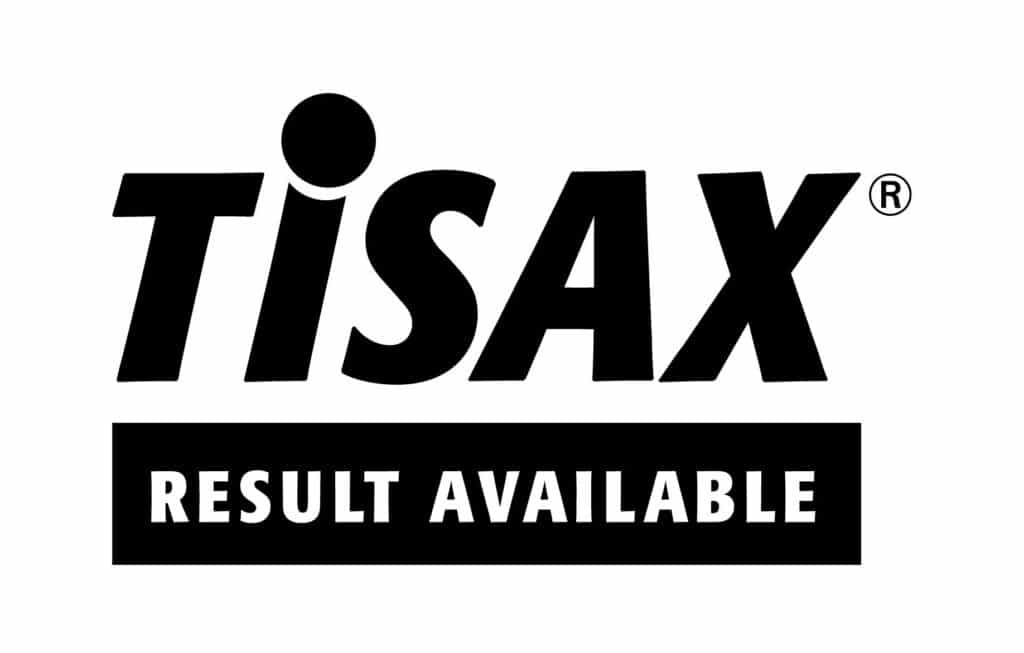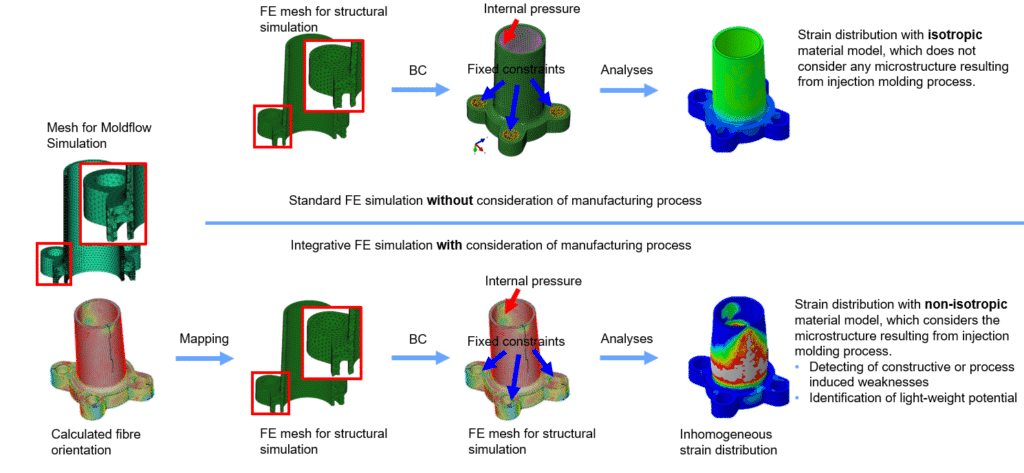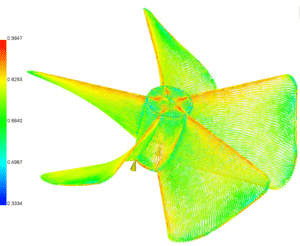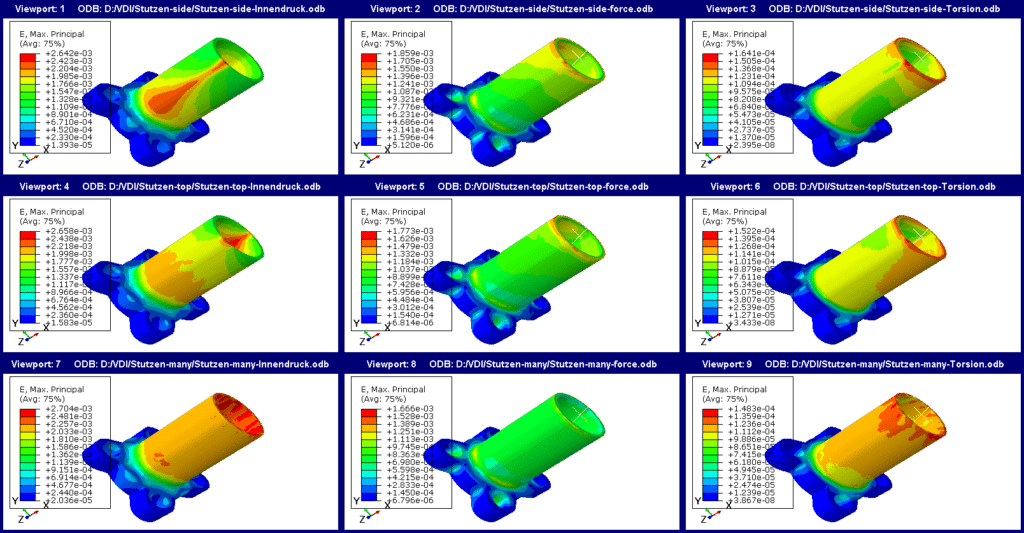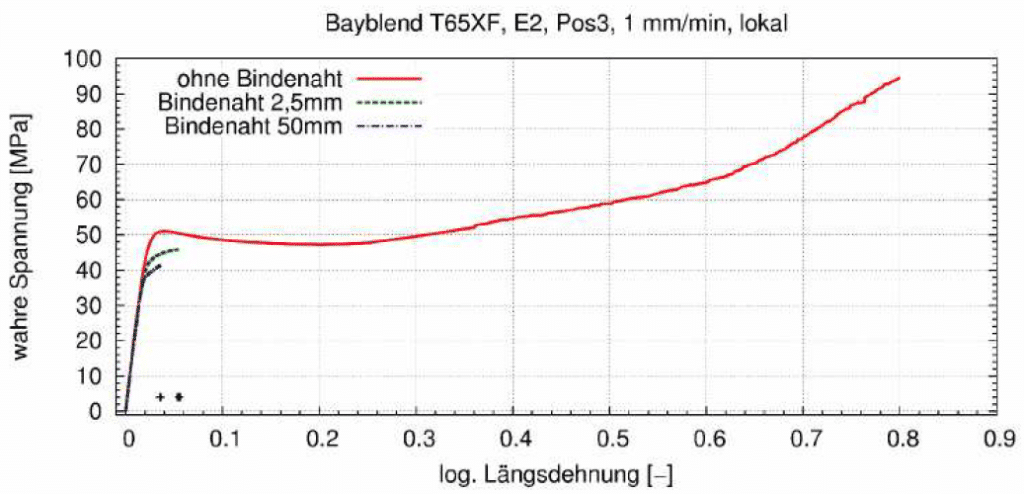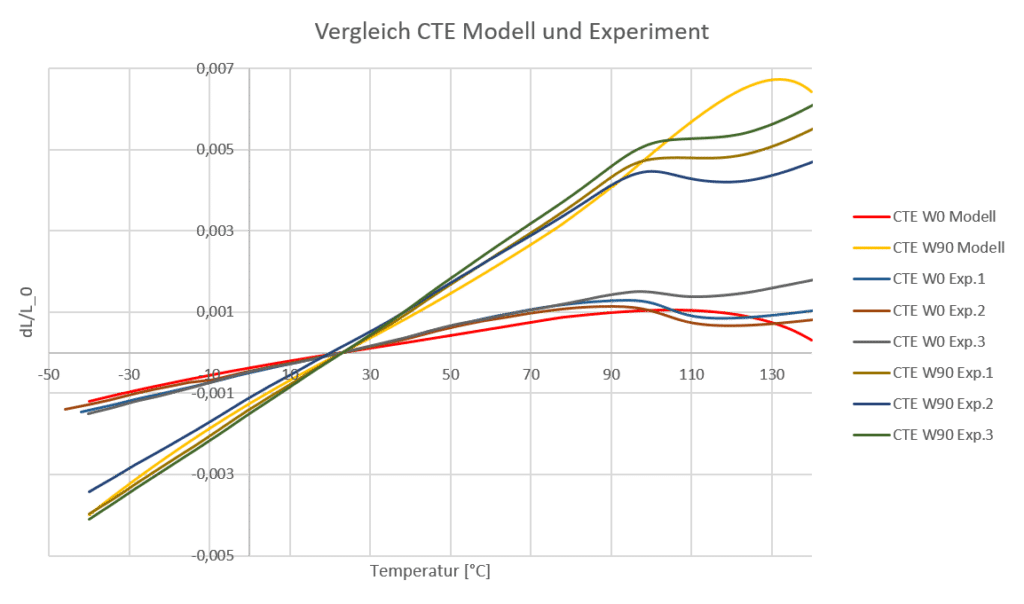The next step in the structural-mechanical consideration of your components.
Integrative simulation with Digimat and Helius is an important tool for saving resources, operating lightweight construction or reliably designing safety-relevant components. It enables the consideration of production influences and the resulting anisotropic material behavior on the component.
-
Fiber orientation
-
Weld and flow lines
-
Residual stresses
-
Injection points
Contact person: Sebastian Mönnich
Consider process-induced properties in FEM.
Example of integrative simulation on a rotor
Read our exemplary integrative simulation study on a rotor part
You have anisotropic components and want to predict failure more accurately? Contact us and try integrative simulation with Abaqus and Moldflow.
Consider fiber orientation
Short fiber-reinforced components have very different properties.
The process-induced fiber orientation leads to very different material behavior within a component. By considering the fiber orientation in the FEM simulation with Digimat and Helius, an over- or under-dimensioning of the component can be prevented. The advantages compared to the isotropic approach are:
-
No empirical reduction factors necessary
-
Detailed prediction of material behaviour
-
Gating concepts quickly verifiable
-
Lightweight construction potential exploitable
Contact person: Sebastian Mönnich
Process-induced fiber orientations have a decisive influence on the component behavior.
Include weld lines
Strengths of weld and flow lines are often far below bulk strength.
It is not always possible to keep weld and flow lines away from mechanically stressed areas. Using Digimat and Helius, weld lines can be transferred from process simulation to structural analysis. In this way, the significance can be increased, especially in critical areas.
-
Simulatively check critical weld line positions
-
Reinforced and non-reinforced materials
-
Optimize process control
Contact person: Sebastian Mönnich
Weld and flow lines can act like predetermined breaking points.
Comprehensive consideration
Injection-molded components do not only exhibit anisotropy in their mechanical properties.
Anisotropic properties in short fiber reinforced components can lead to unexpected deformations under mechanical and thermal load. Digimat and Autodesk Helius allow a comprehensive consideration and thus help to exploit processes and connection concepts as design features.
-
Design the fiber layer according to the requirements using runner concepts
-
Consider direction-dependent expansion coefficients
-
Targeted control of stiffness


